How to Build a Book Club, Vol. 1
Following up on our introductory post, Volume 1 of our HTBABC Series features four steps to help you get started.
So, you want to build a book club?
Well, WE. ARE. HERE. FOR. IT. And for you.
We’re a couple months into the third year of running our beloved book club, Dear Readers, and we’ve certainly learned a lot and found a number of things useful, all which we’ll try to share with you in this series.1 But before you can start applying much of what we’ll be posting about, you have to actually get started, and that is also where we’ll get started. Here are four initial steps you should take:
FIND a Partner in Pages.
DECIDE what kind of book club you want to be.
ESTABLISH a governance system.
GATHER your people.
FIND A PARTNER IN PAGES.
Although it certainly can be done, we do not recommend you do this alone. If you want to start a book a club, we suggest you find a Partner in Pages, or a PIP as we affectionately refer to each other. We use the word partner on purpose because it implies a couple things that are non-negotiable in our minds. First, you are both committed, not only to the this thing you are building but to each other. Second, when you need to, you can set your shit aside for the good of the bigger thing—the bigger thing being your book club, of course.
Life has a tendency to life. Things get thrown at us that necessitate book club taking a back seat. A relationship can go through rough patches. Having a good Partner in Pages by your side means that someone is there to take some weight out of your pack and put it in theirs when you’re just really doggin’ it on that uphill climb. (We’re gonna be using lots of metaphors here.) And being good Partners in Pages to each other means that no matter what goes down in your personal lives, book club not only stays neutral territory and a safe space but a thing you both still get to keep loving. Basically, book club is your kid, and you have joint custody and co-parenting responsibilities. (I told you…lots of metaphors!)
Let’s stick with the co-parenting one for a moment—
Another great thing about having a PIP is that you get to divvy up the household chores and share what Amanda Doyle refers to as the “ticker” list. Running a book club involves some really fun, shiny group projects like planning your syllabus and making merch design decisions—more to come on these in future—but there some rather routine logistical duties to attend to as well. Even small tasks like a reminder email can take up time you don’t always have on a busy week. However, when a slow week happens to strike, our reminder e-blasts are basically works of art! Anyway, baci to the one during which you feel overwhelmed…Enter your PIP. One of us always seems to have a little more capacity when the other doesn’t, and we’re just a Marco Polo a way and ready to take the baton.
Okay, let’s set aside the adulting for a second and allow ourselves to regress. Because let me tell you, one of my favorite things about co-running this book club with Cass is the dreaming we have done and continue to do. There are days when we are little-kids-on-Christmas excited. We will go back and forth on Marco Polo FOR HOURS trading ideas for our next meeting, a future Substack post, next year’s syllabus, or a future something we’d like to do someday that involves some iteration of this thing we’re creating together. We literally cannot stop talking and will not shut up about book club. (This is why we had the hats made, people. Keep going; you’ll understand what we’re talking about shortly.)
Sometimes we push each other to dream even bigger. Sometimes we challenge each other to think differently. Sometimes we have to reign each other in. (Cass, are you sure we want to attempt a full-on dinner party for our holiday celebration on a Friday night after we worked all week? I mean, I am here for it if that’s what we wanna do, but I just wanna be sure it’s what we wanna do.) All of the time, even when we’re balancing each other out, we matching each other’s (bookish) freak.

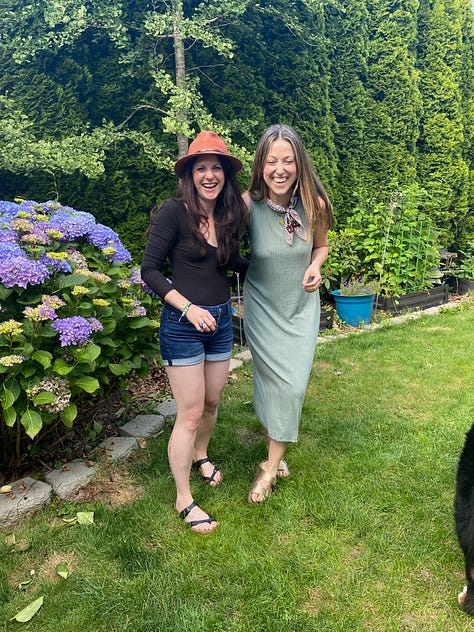

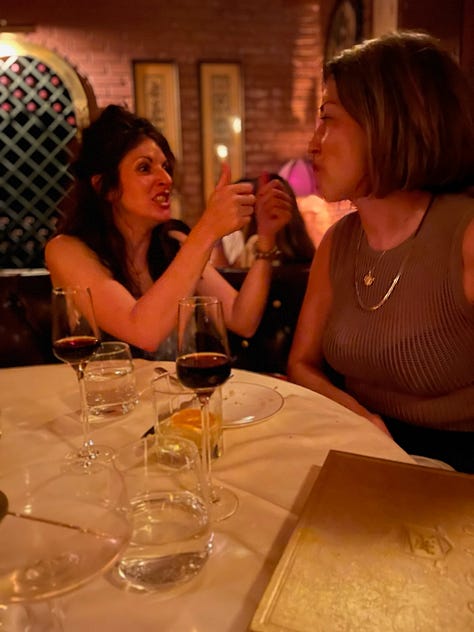


Trust us, you want a PIP.
DECIDE WHAT KIND OF BOOK CLUB YOU WANT TO BE.
Steps two and three go hand-in-hand; they are similar but not the same. When you’re thinking about starting a book club, Cassie and I recommend approaching it just like you would if you were starting a business, or rather, a non-profit. Get clear on your vision and mission statement. We’re not saying that you need to have these things, though we don’t hate the idea…. But you (and your PIP) should know what it is that you’re trying to do by starting a book club. Do you just want to get your besties together to fellowship with girl dinner and wine?2 Think Diane Keaton and her girls in the Book Club duology. Do you want some fellow nerds with whom to dig into a serious tome? Pre-moves to Seattle, Cassie and I once spent six months virtually book-clubbing Women Who Run with the Wolves by Clarissa Pinkola Estés with a few other rad women. Or are you going for a Gertrude Stein-esque literary salon? That was part of Cassie’s ultimate vision.
When it came down to it though, what we both really wanted was something akin to the book clubs we loved and had to leave behind in DC and Houston. Mine ran out of a local independent bookstore on Capitol Hill, so it was co-ed and open to whoever wanted to join. We read only fiction, and there were quarterly themes decided on by the community member who organized it for the bookstore. Cassie’s was an amalgamation of all the people she knew in Houston—she made a point in the first few months of moving there to reach out to her network. Over coffee or drinks, she asked each friend, “Are you a part of a book club I can join?” The answer across the board was, “No, but if you start one I’ll join.” The group stayed relatively small and close-knit, and they read a decent variety of genres but focused mostly on contemporary fiction.
So what kind of book club did we want to be?
We wanted to be a book club for whom the books were important. You may think that is obvious, but let me explain. We wanted our book club to be a place where you could always show up, even if you hadn’t read the book, but we also wanted to spend the majority of our time actually talking—and we mean really talking—about the book. We wanted to be a book club who put a lot of consideration and care into the books we choose to read. We wanted those books to span genres, incorporating a diverse slate of authors and perspectives, and yet we wanted to focus primarily (though not exclusively) on those authors who identified as woman or non-binary. We wanted to be a book club who chose books that would challenge us and full of readers who would approach with curiosity, so that even if we didn’t like everything we picked, we could always find something from which to learn.
ESTABLISH A GOVERNANCE SYSTEM.
Once you have laid out the kind of book club you want to be, you have to decide who’s in charge. Again, you may think is obvious—you are right? But we aren’t just talking about who’s going to send out the logistics emails. We’re talking about who’s in charge of what a book club is really all about (at least for us)—the books.
Cassie and I knew from the beginning that our book club was not one in which our members would be choosing the books. There’s no way to sugarcoat this, and we were up front about this with our members. (Dear Readers, thank you for trusting us with your reading life; we care deeply about you!) We had a vision—it involved a year-long syllabus with supplemental reading. We operate under what we lovingly refer to as a “benevolent dictatorship” model. Lots of book clubs favor a democracy—we get it. We’re not gonna tell you how a democracy works in this series (and you certainly can’t rely on the current administration to explain it either), because that’s not the kind of book club we run, but we will be sharing more about how our we manage our Dear Readers household in a later post. (Maybe these metaphors are not as random as I thought?!)
GATHER YOUR PEOPLE.
To have a club, you need people to join, so that’s the next step.
When we got started, we cast a wide net. We were both fairly new to Seattle, so we literally invited every woman we knew who liked books…or had implied they maybe had read one (kidding…kind of). These women were Cassie’s or my friends (and people we were hoping to become friends with), co-workers, and neighbors. Our invitation was simple: “Are you interested in potentially joining a book club?” We didn’t require a commitment, but if they were intrigued by anything from our elevator pitch, which was comprised of bullet points from steps 2 and 3, we took their email address. (I’m pretty sure we didn’t use the word “dictator,” but I know we mentioned a syllabus!)
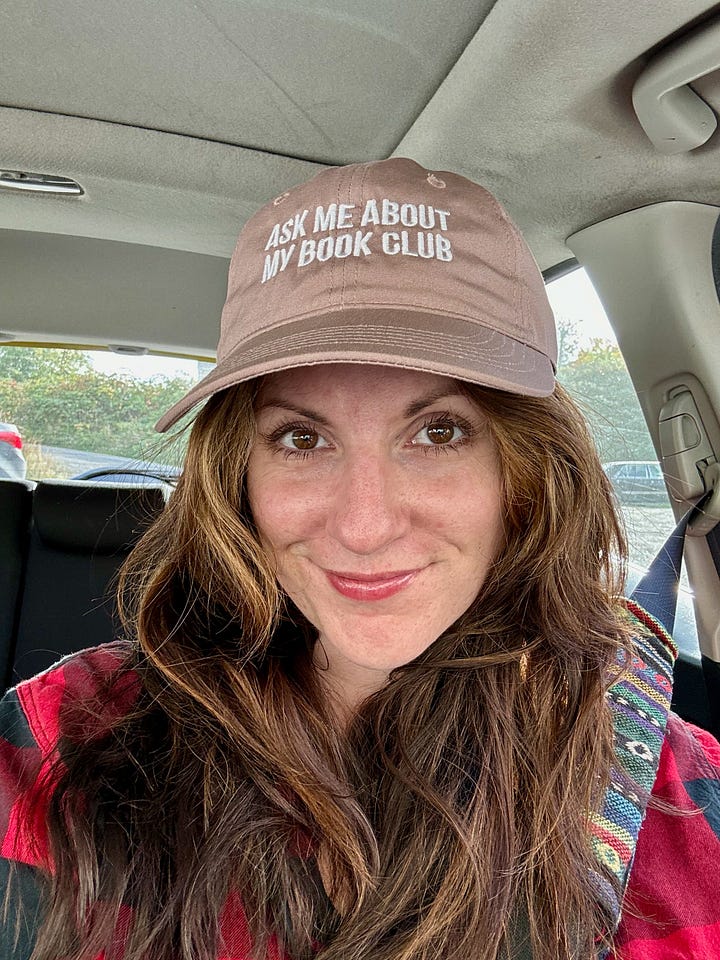
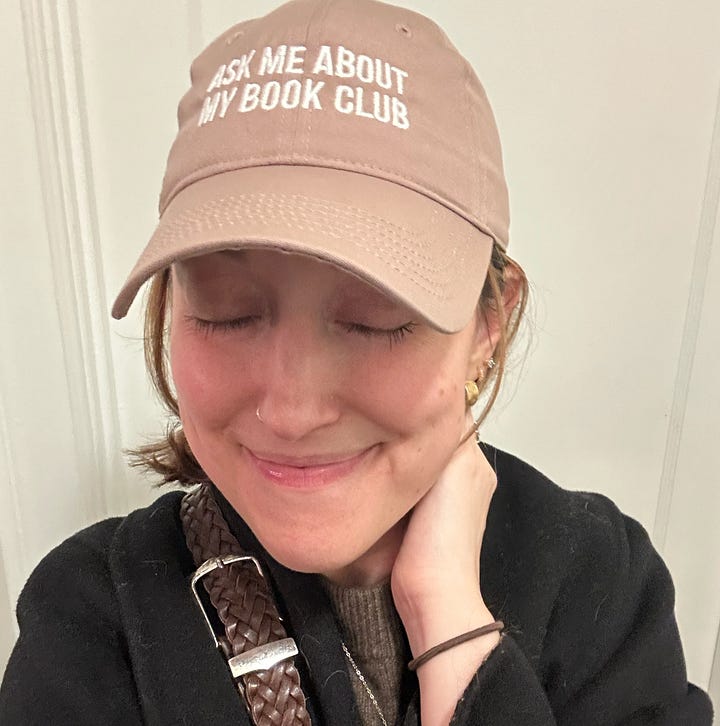
We sent out the first communication about our inaugural April 2023 meeting to 25 folks. By the end of that year, 15 women were attending regularly. At the time of this posting, we have hosted 22 meetings, and we currently have 18 women active in Dear Readers with a list of a few others waiting to join.3
I have to be honest in that I’m not sure we would recommend you take the same approach we did, but it depends, again, on what kind of book club you’re trying to be. It didn’t take Cass and I long to realize that although we had intended to start a book club what we were actually doing was building a community. Although I would say it took us that first nine months to do it—to get to know and trust each other—we are now a pride. I won’t say it was luck, because there was so much intentionality behind what we did. Cass and I tend to surround ourselves with the same sorts of people, which means that as unique as each of our members are, we had a strong foundation of existing shared interests and values to build on. Values like intellectual curiosity, a willingness to explore the emotional depths, and an openness to being stretched outside of our comfort zones.
As Cassie said in the introductory post to this series, we certainly aren’t perfect. We make missteps and mistakes, and then we own them. We also makes schedules for this Substack, sets dates for meetings, and dream up elaborate dinner parties…and then life lifes, and we have to call an audible. As Taylor Swift put it and as we quote so often to each other it has become a sort of mantra, “This is our house, and we make the rules.”
We close this first post by urging you to remember this one thing about starting a book club if you take nothing else from this post: This is your house, and you make the rules. If something isn’t working, change it. If you change your mind, change it. You’re a goddamn adult, so you can do what you want, but if you need a permission slip, we (and Taylor) give it to you now.
This is your house, and you make the rules. If something isn’t working, change it. If you change your mind, change it. You’re a goddamn adult, so you can do what you want, but if you need a permission slip, we (and Taylor) give it to you now.
Meet us back here in March for Volume 2 of HTBABC when Cassie will pull back the curtain on the Benelovent Dictatorship model and tell you all about how we pick books, come up with themes, and keep track of all of the shit we talk about IRL or on Marco Polo throughout the year.
Until then, may whatever you’re reading be a real page-turner,
Stevie
P.S. Got a question about something we covered in this post? Is there something you’d like to see covered in a future post in this series? Let us know in the comments!
And, if you missed Cassie’s introductory post, start here:
Can we please take back the word “fellowship” from the church?!
A Note on New Members: We just brought on three new members in January, which is our first time doing so. We made an intentional decision to do it in a cohort. Will we bring more on? I’m sure we will as we have no desire to be exclusive, but, as with everything we do, we want to be intentional. We want to learn what we can about doing it right. Also: This is not just a book club; it’s a community, and we want to keep it safe for all—potential new members and current residents. Additionally, we meet in each other’s houses, and let me tell you, 18 women is a crowd. We are actually running into physical space constraints, and we have to figure out how to expand (literally).





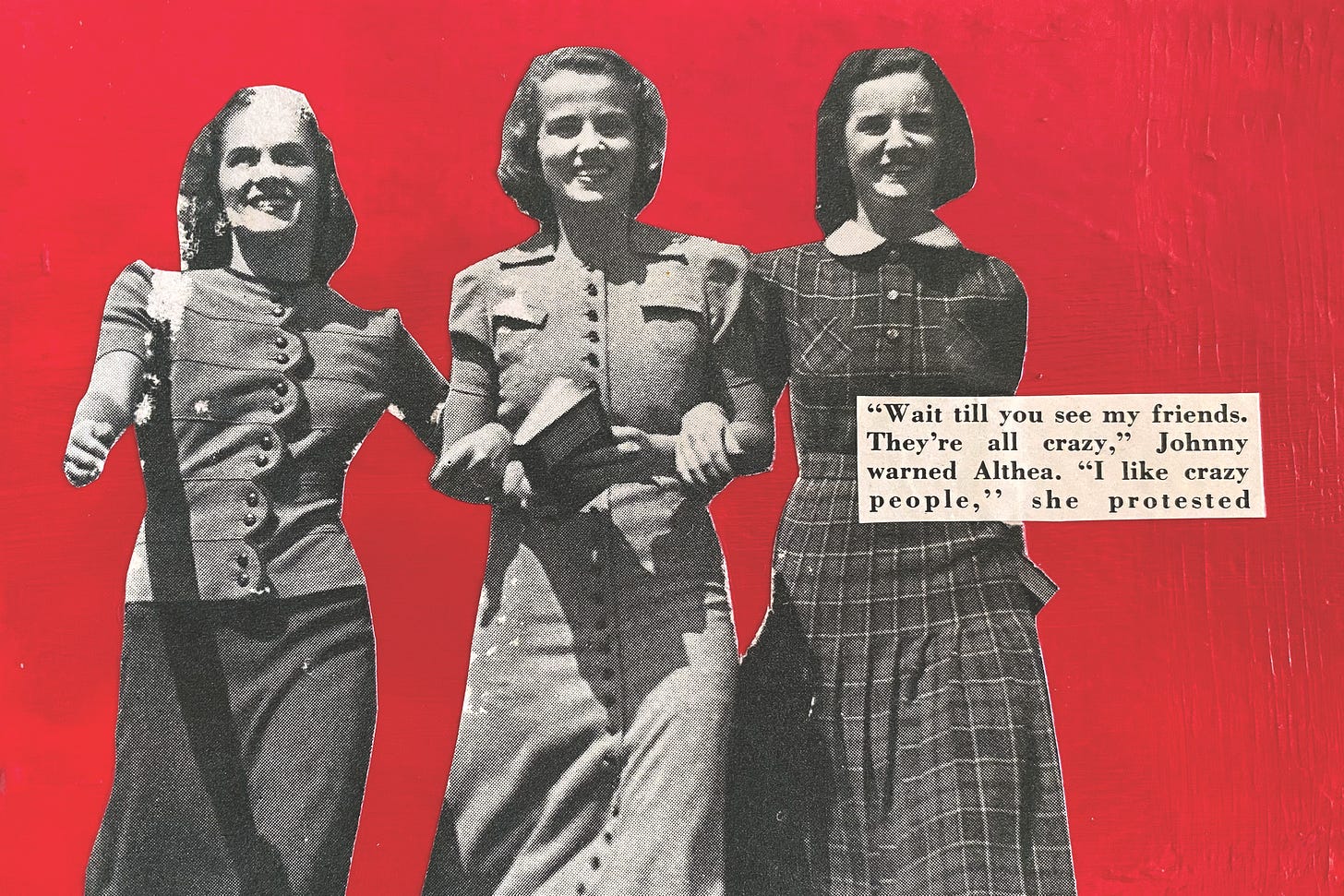

Love this! Can’t wait for vol 2!